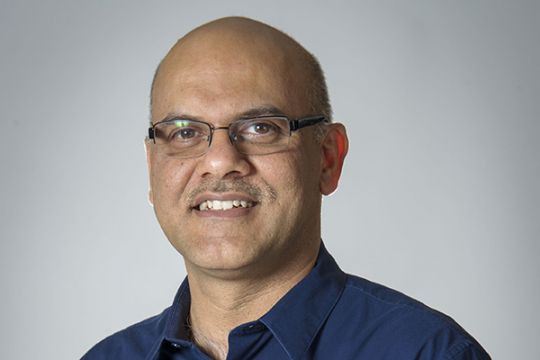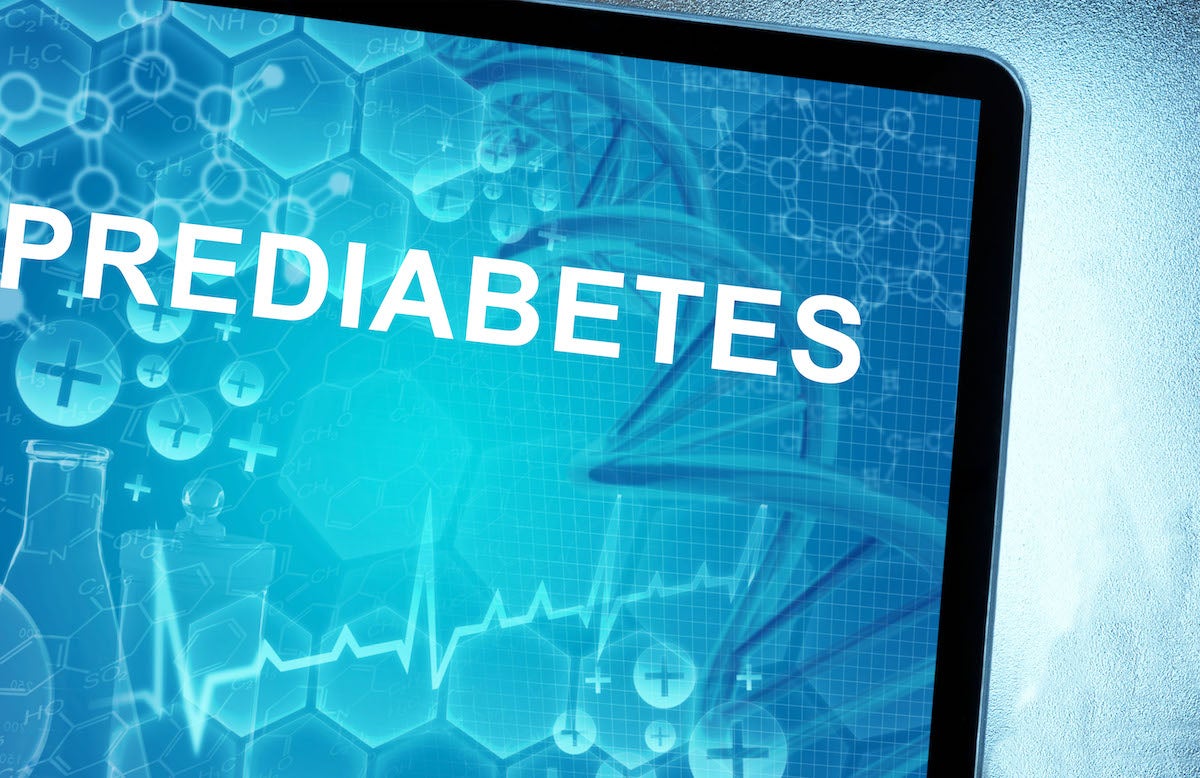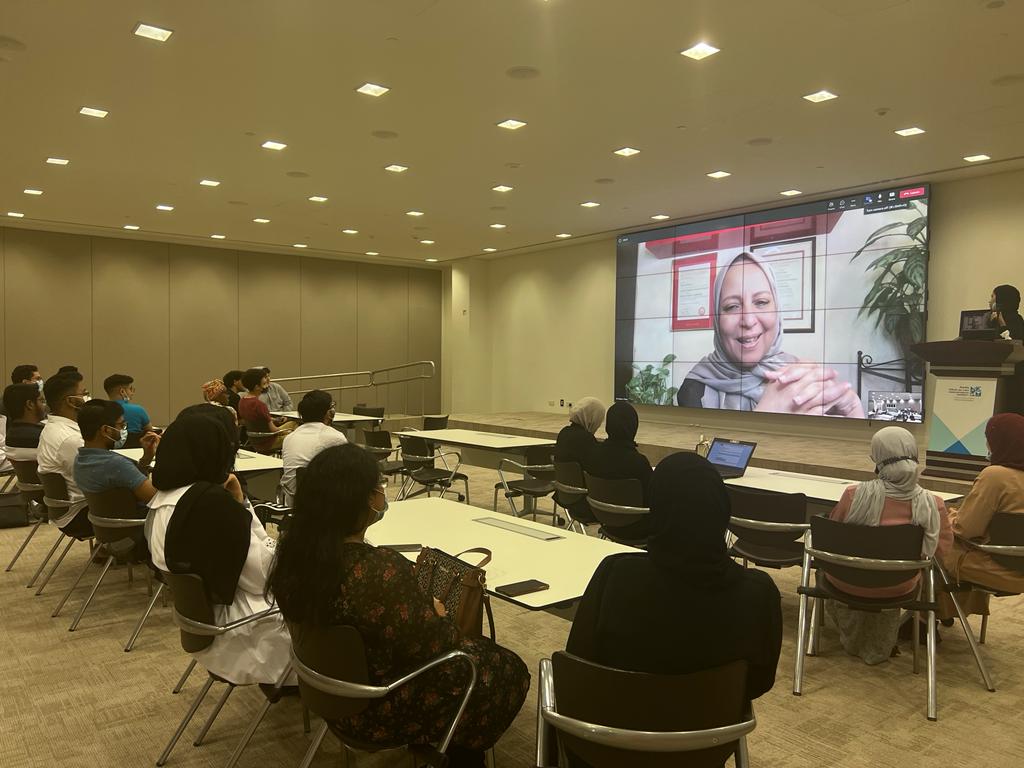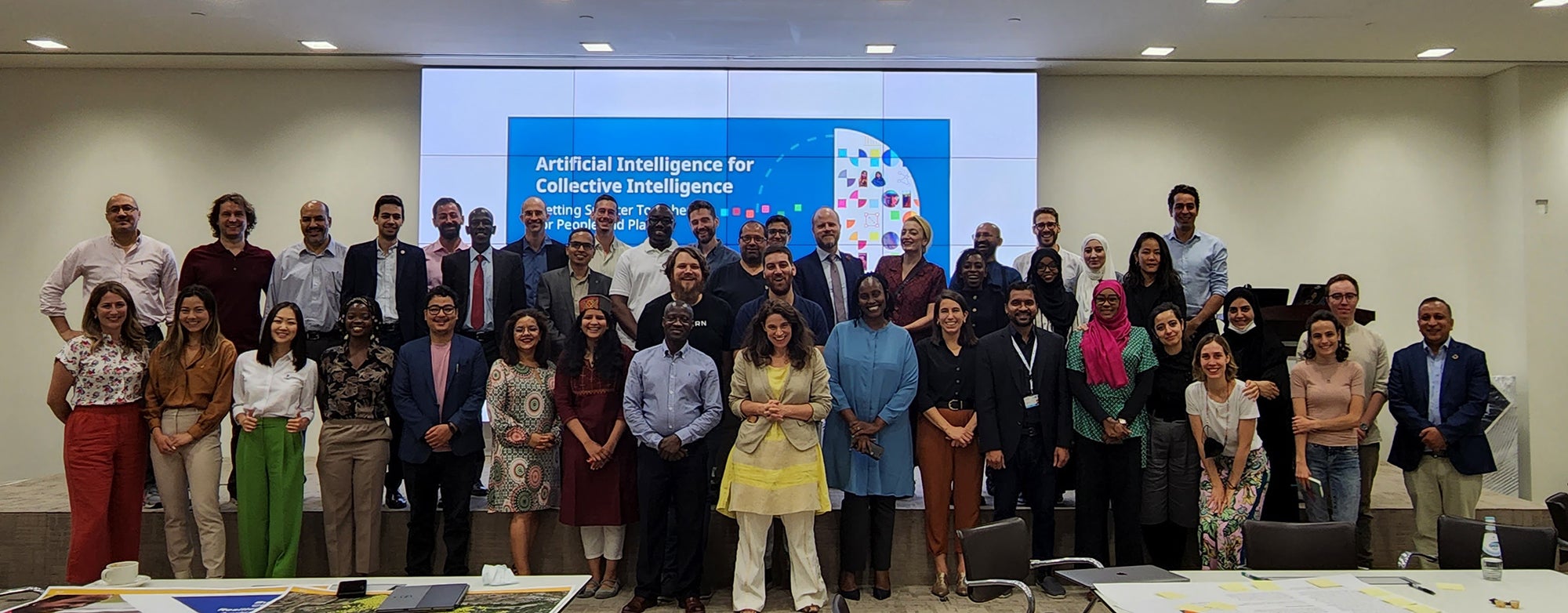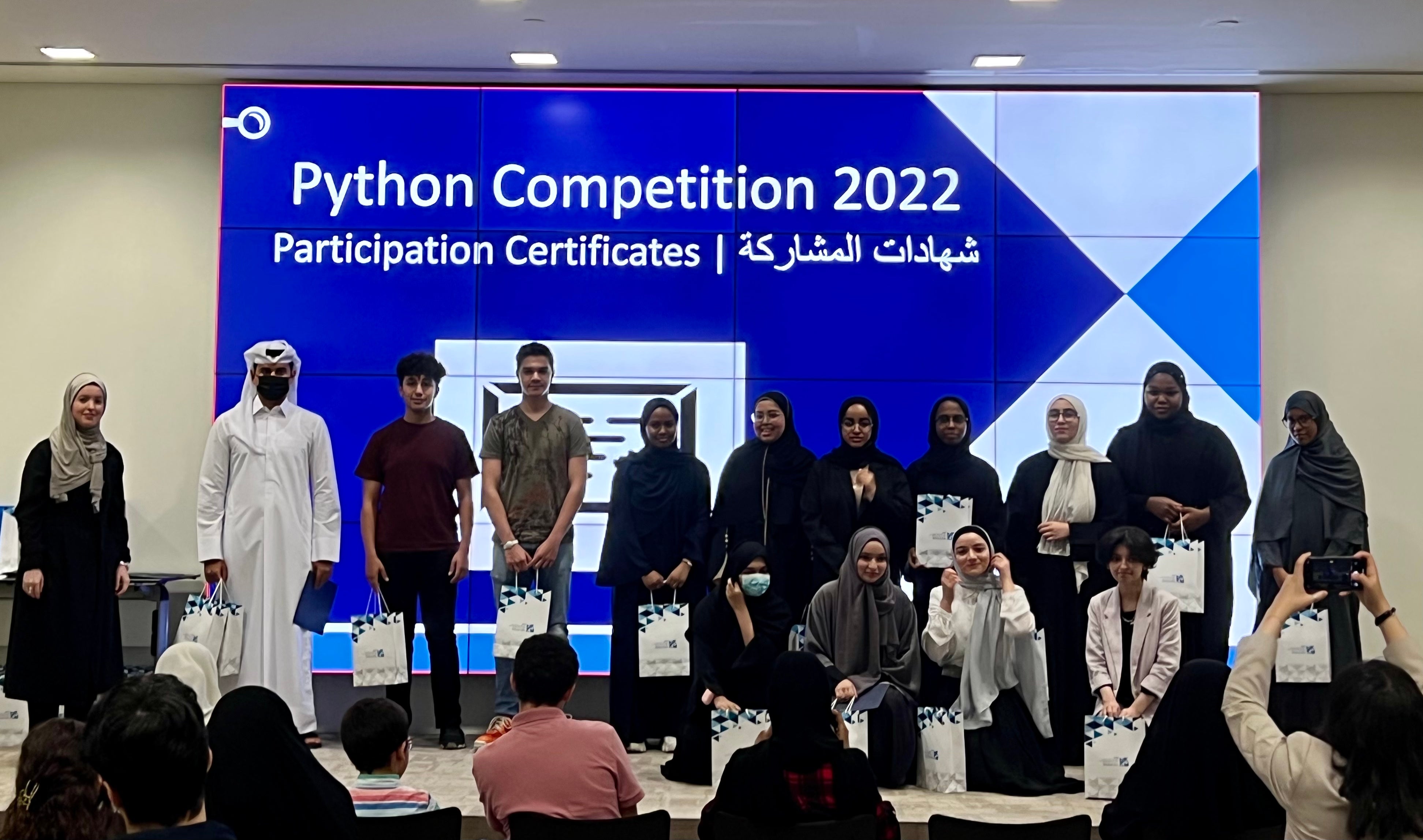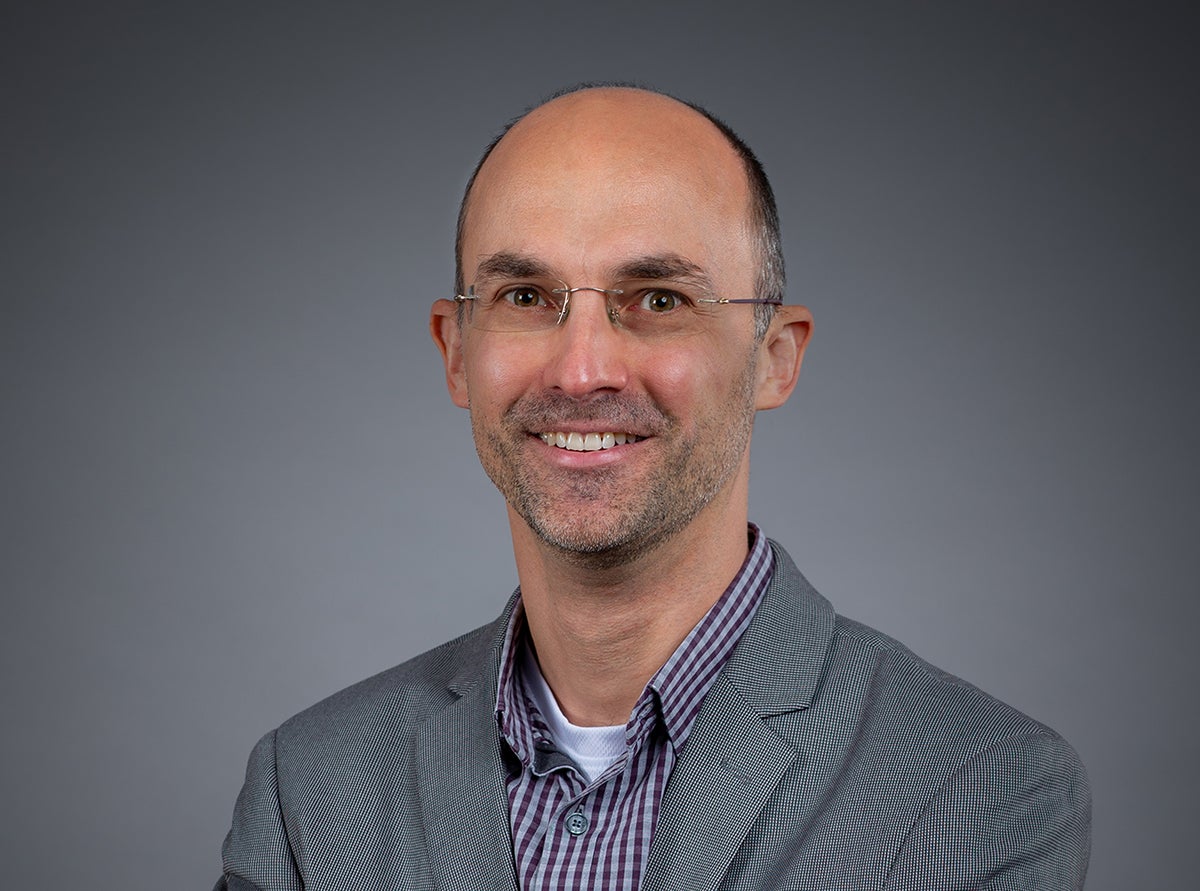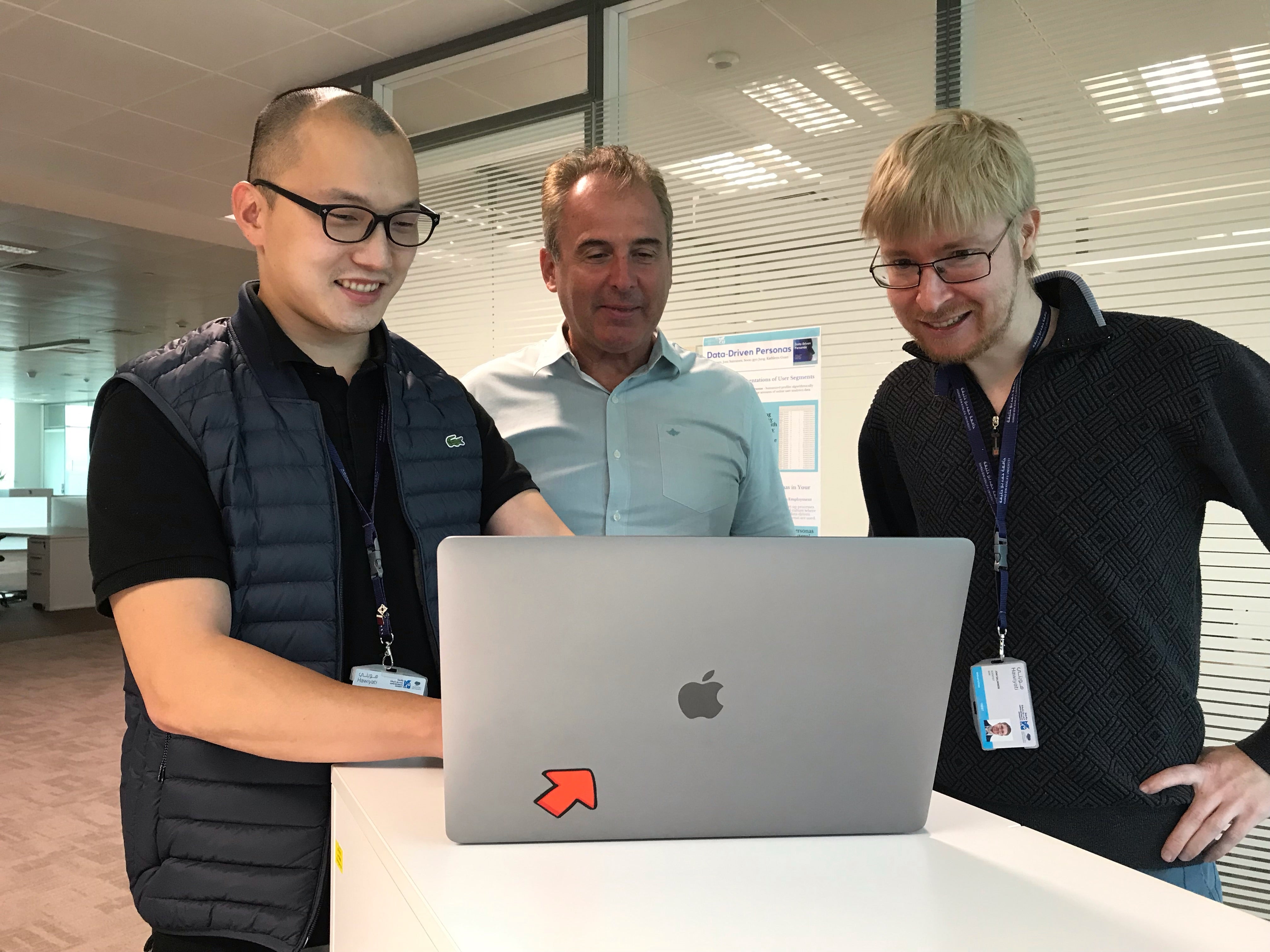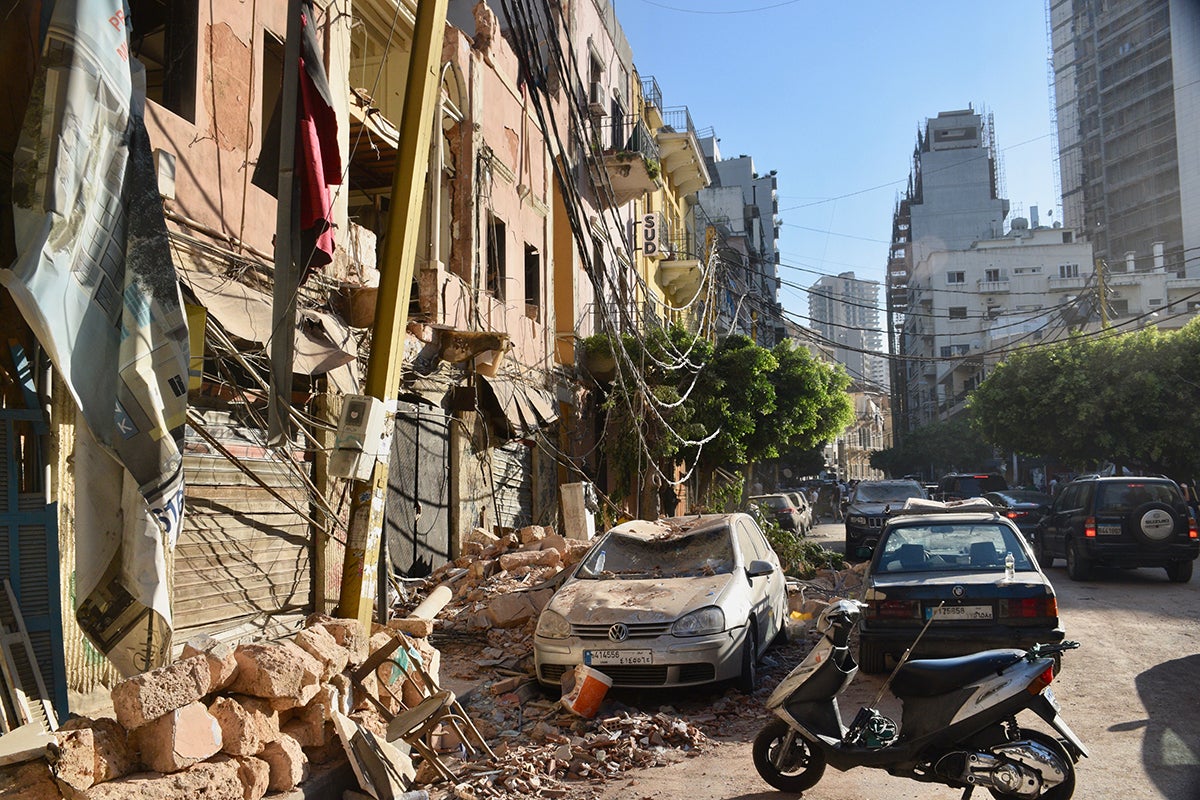
Using Artificial Intelligence When Humanitarian Disaster Strikes

When a powerful blast occurred at the Beirut port in Lebanon on 4 August 2020, social media exploded as people began sharing situational updates, videos, and images with family and friends. Some were in the form of text messages later uploaded to social media.
The blast was among the largest non-nuclear explosions in history, killing at least 218 people, injuring over 7,000, leaving countless without homes, and destroying residential areas, hospitals, and schools.
In the aftermath of such an event and when every second is critical, breaking through the chaos of thousands of messages to get the right information to the right responders and decision makers is always a time-critical priority.
Experts at Qatar Computing Research Institute (QCRI), part of Hamad Bin Khalifa University (HBKU), were able to help address this challenge using advances in artificial intelligence (AI) and machine intelligence. Their advanced digital platforms were used to facilitate one of the most critical on-ground responses in such an emergency: identifying actionable information.
Humanitarian technology
Dr. Ferda Ofli, Senior Scientist in the Social Computing group at QCRI, explains: “During an emergency, there is usually an abundance of information shared on social media platforms. But how to sort through that massive overflow of information is the real challenge. When the problem is about finding the needle in the haystack, emergency responders cannot perform this information filtering manually as that can easily paralyze the relief efforts.”
According to Dr. Ofli, the data can be valuable for disaster responses as well as more effective operational planning during crisis recovery and beyond - but only if processed efficiently and in a timely way. This was the challenge that motivated QCRI to develop the “Artificial Intelligence for Digital Response (AIDR)” system, in partnership with the United Nations Office for the Coordination of Humanitarian Affairs (OCHA) and the Standby Task Force (SBTF).
AIDR has since been deployed by OCHA and SBTF during several crisis responses. It was activated after the devastating 7.8 magnitude Gorkha earthquake which struck Nepal in April 2015, followed by a 7.3 earthquake in May.
Deploying AIDR during a time-critical crisis
After the Beirut port blast, QCRI was able to help the UN Development Program (UNDP) with their post-disaster impact and needs assessment. Specifically, their text processing models analyzed tweets posted both in English and Arabic to understand the public chatter and identify messages about injuries, blood requests, shelter needs, and food insecurity. These are all very critical information categories for planning rapid response and relief.
QCRI’s image processing models, on the other hand, analyzed the collected social media images to assess the overall severity of damage in street-level images. In addition, they were able to analyze high resolution satellite images captured before and after the explosion to detect damaged buildings and create a damage extent map of the impacted area.
How AIDR made a difference
On the image analysis side, rapid damage assessment using social media images provided emergency response agencies with an early assessment of the scale of destruction. The satellite-based analysis, in turn, helped reveal the bird’s-eye view of the extent of the damage. Text messages about injuries, blood requests, and shelter needs provided an initial understanding of the situation and helped with planning relief efforts.
How does AIDR operate?
AIDR harbors several machine learning models that can automatically analyze the collected data, i.e., sift through the noise, eliminate irrelevant and redundant content, and identify the useful bits of information to help emergency responders in real time. Language-specific models are used to classify social media messages while computer vision models are used to analyze the images. The system also tries to geolocate the extracted data when possible so that the most important information can be visualized on a map and presented to humanitarian organizations.
Improving innovation in humanitarian computing
QCRI is pursuing several directions to improve their humanitarian technology with other techniques and computational methods. One of them is the joint modeling of text and image data. For example, their existing models process and analyze text and image data separately/independently. However, these modalities are not completely independent, creating significant potential to improve performance by training the machine learning models in a multimodal fashion. In this way, the models could draw out complementary information that, when analyzed jointly, help in ascertaining the ‘big picture’ of a disaster situation at a greater level of detail.
A second direction focuses on developing more fine-grained models for object-level damage assessment rather than only the overall damage. A third is to triangulate information from heterogeneous data sources such as social media and satellite imagery to obtain more accurate situational information. Lastly, QCRI is working on improving its geolocation inference pipeline to ensure that they can identify the geographical location of the extracted information with certain accuracy.
Reaching all countries
With its current features, AIDR can also be deployed where humanitarian disasters impact very remote regions, or regions that have not adopted very advanced technology.
“AIDR is a public service available online for humanitarian purposes. So, there is no need for advanced computing skills from end users. However, it is true that the utility of our technology depends very much on social media penetration rates in a country or region. On the other hand, if a country is remote, it is difficult to operate and provide relief even for humanitarian organizations, let alone our tools. Therefore, remote or not, if there is enough social media usage in a country, QCRI’s tools can still assist the relief efforts,” explains Dr. Ofli.
AIDR is an example of the way QCRI is aiming its research and development at improving the effectiveness of humanitarian responses during emergencies. The institute’s innovative technologies ably complement Qatar’s contributions to humanitarian aid during rescue and relief work, and its cooperation with international organizations to aid disaster responses at the regional and international level.
Dr. Ferda Ofli is a senior scientist in the Social Computing group at Qatar Computing Research Institute, part of Hamad Bin Khalifa University.
Related News
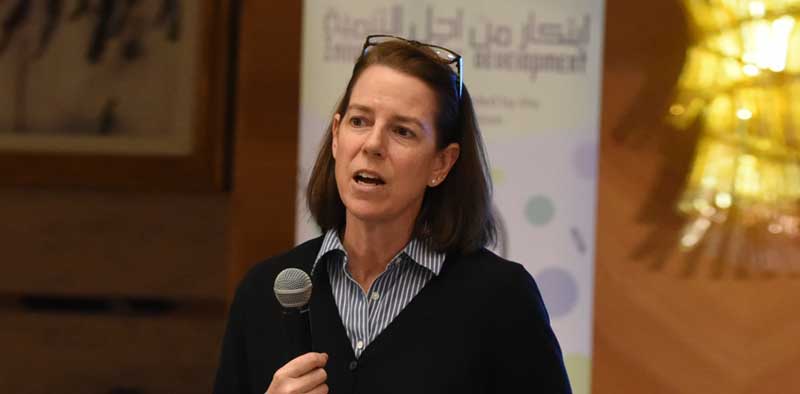
QCRI and UNDP to Host Workshop on Artificial Intelligence as Tool for Social Good
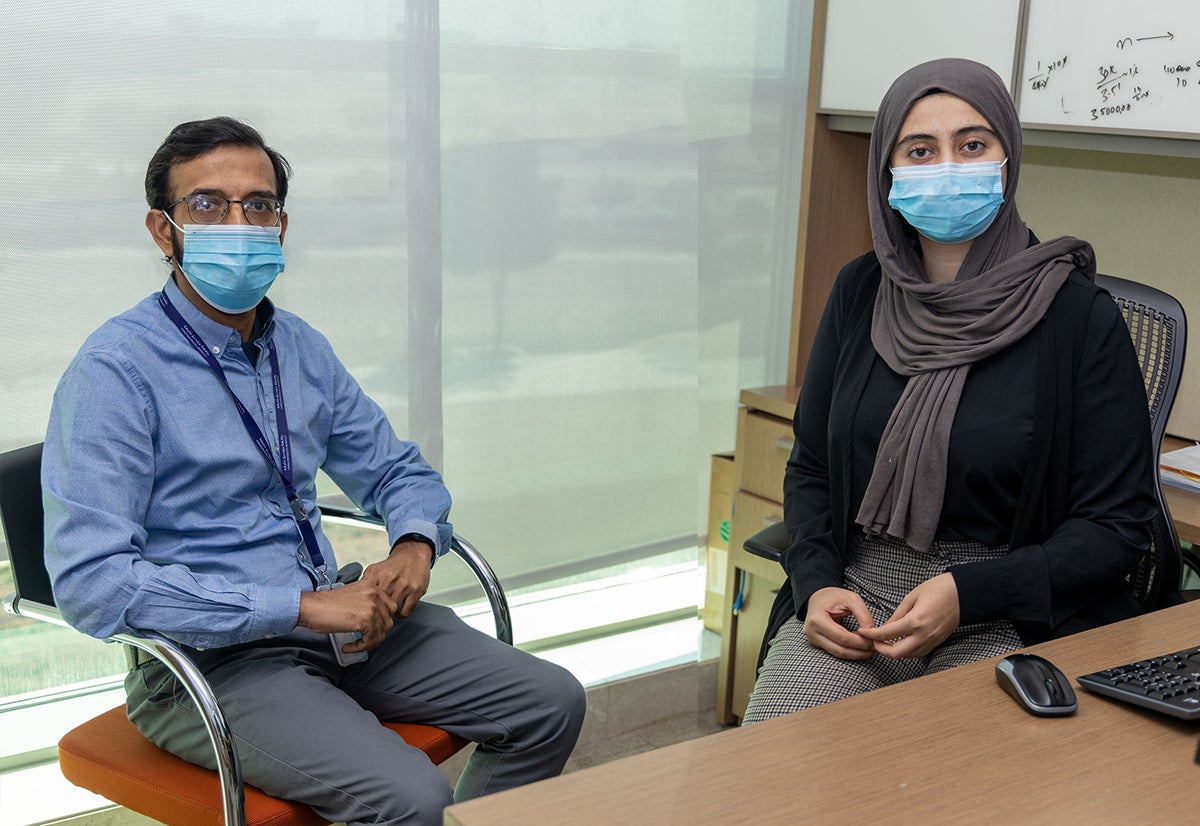
Qatar Computing Research Institute Achieves Milestone with its QARTA Street Map Routing Engine
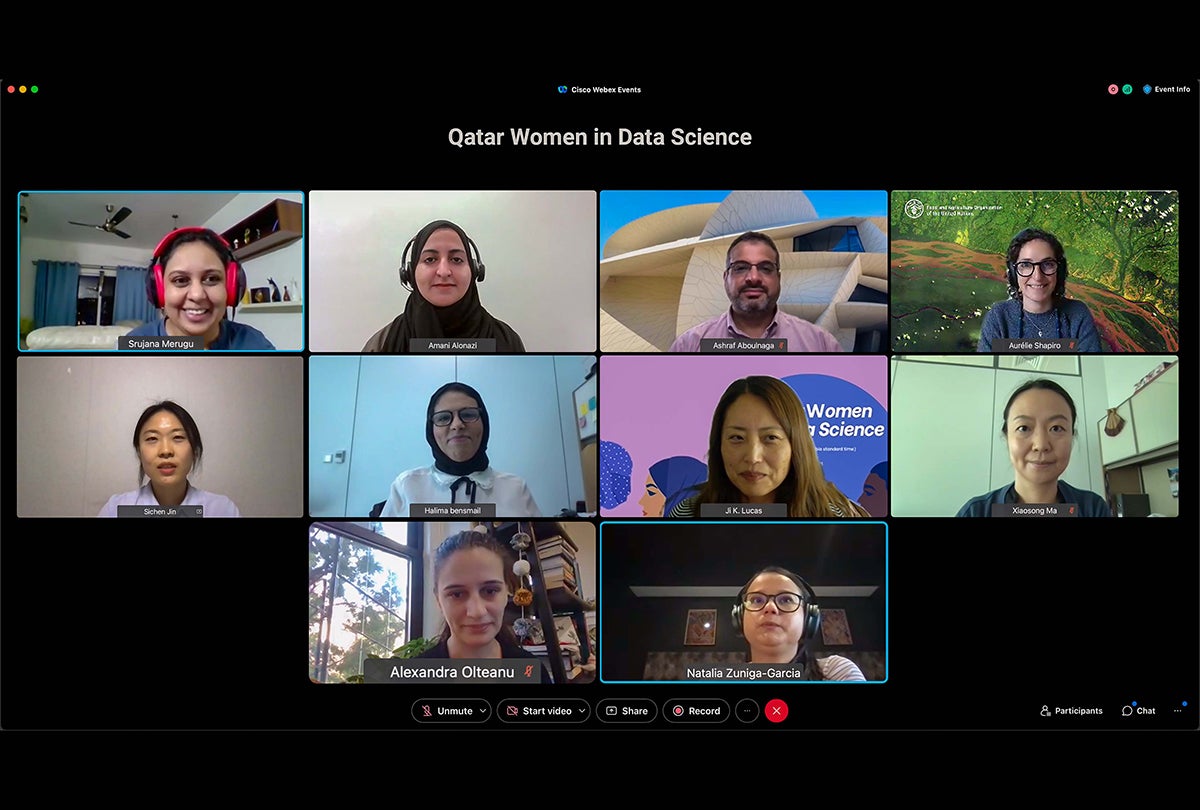
Women Leading in Data Science Inspire Push for Diversity at HBKU’s Qatar Computing Research Institute Workshop
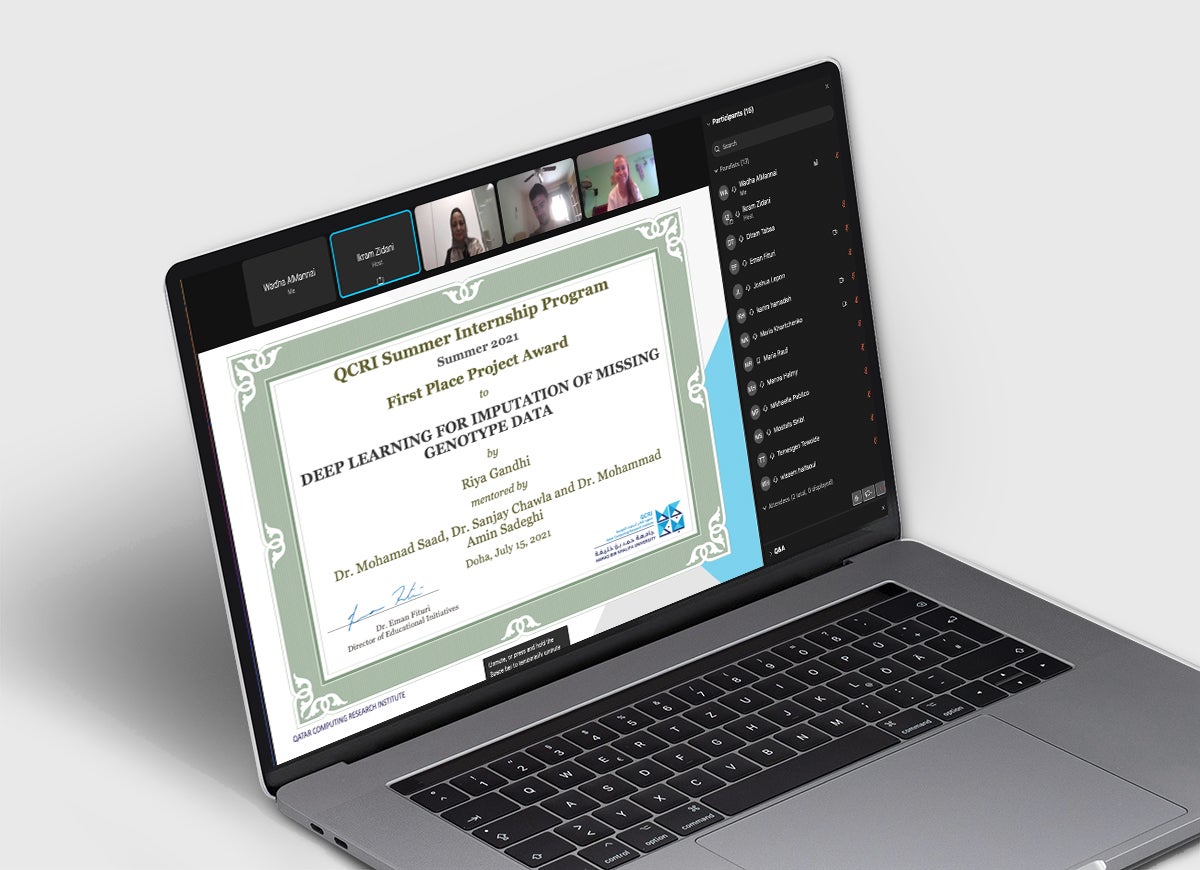
Qatar Computing Research Institute Provides Intensive Training During Summer Online Internship Program
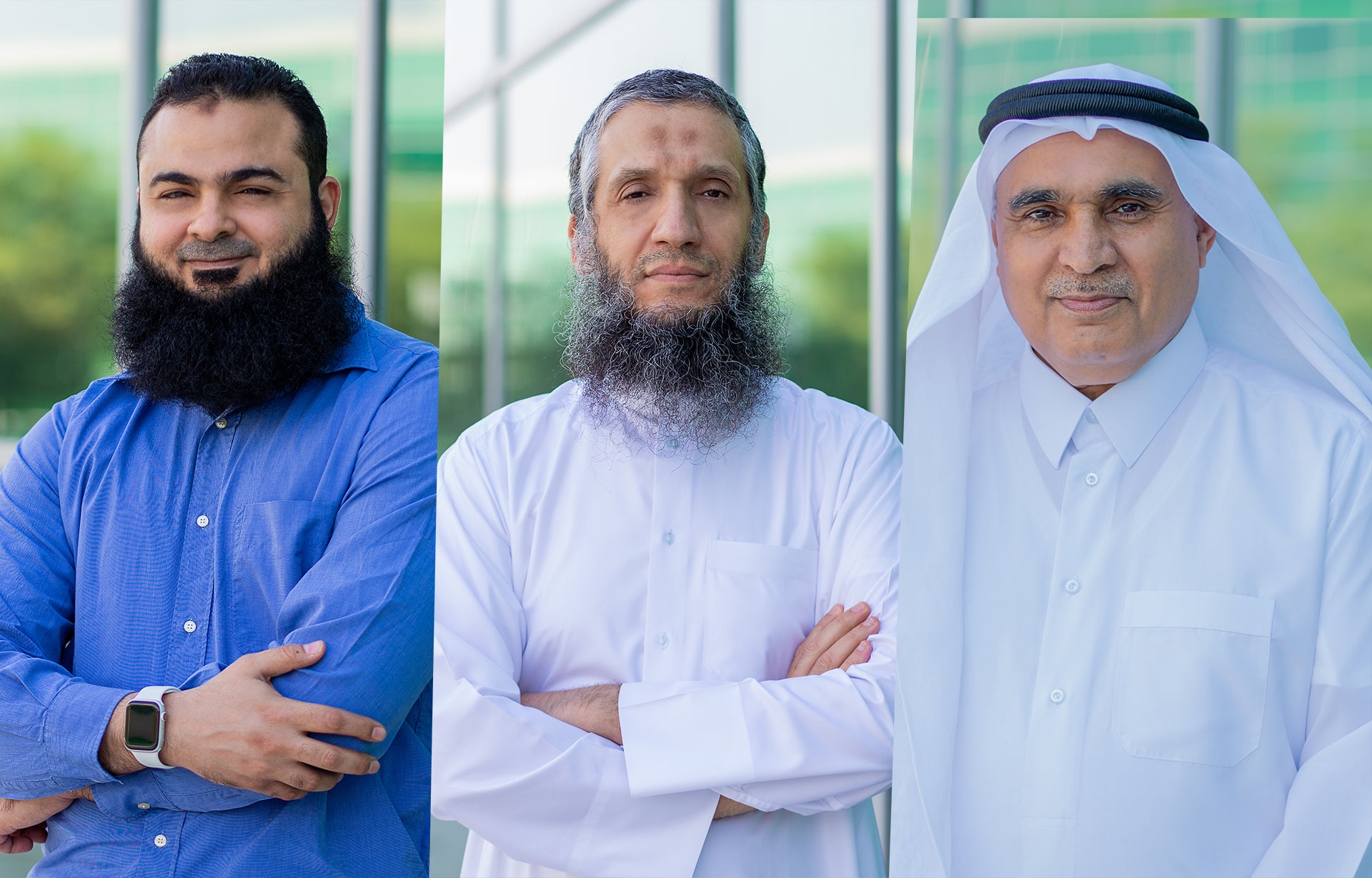
Qatar Computing Research Institute AI Review Tool Rayyan Now Part of US-Based Startup
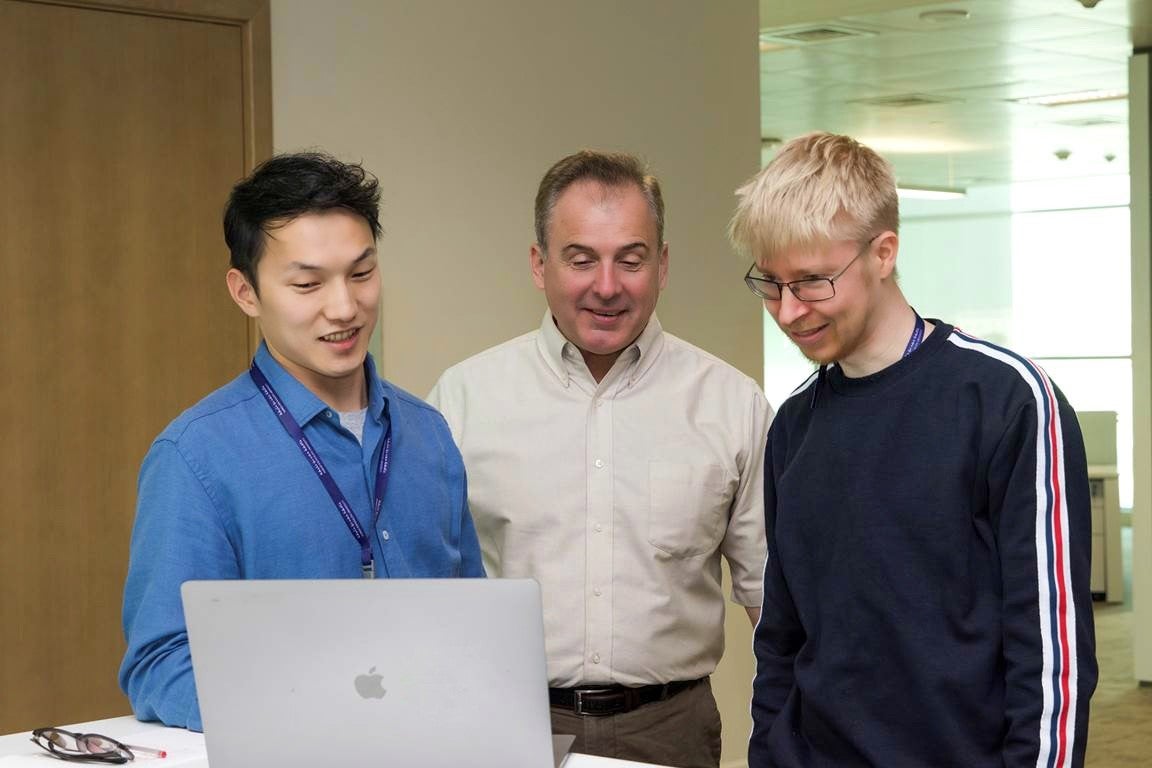
HBKU’s Qatar Computing Research Institute Awarded Prestigious Facebook Grant for Project on Privacy Personas
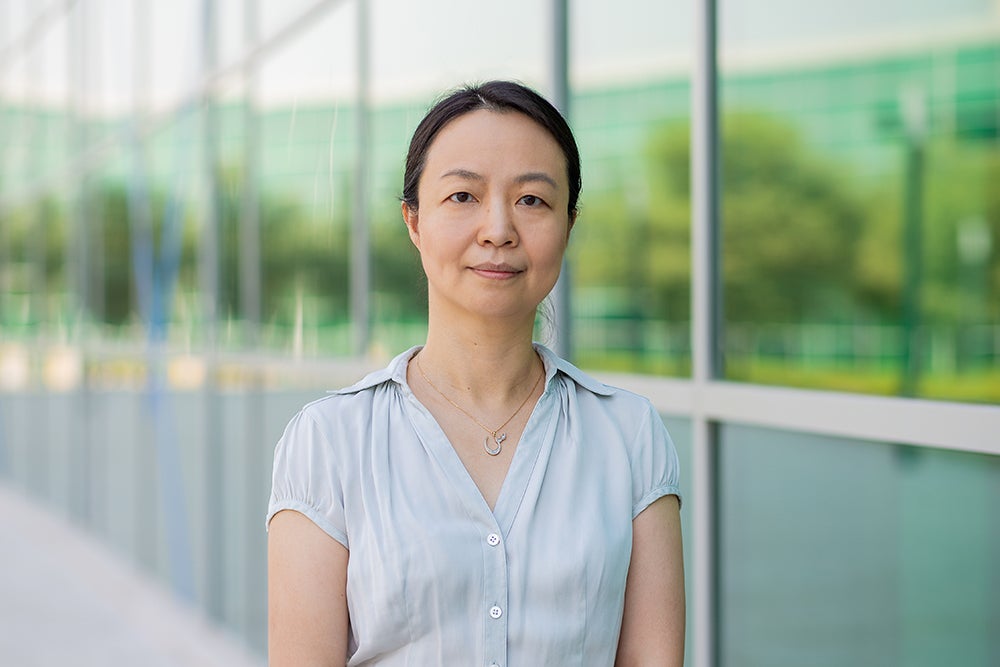
HBKU’s Qatar Computing Research Institute Scientist Named 2020 ACM Distinguished Member

QCRI and UNDP to Host Workshop on Artificial Intelligence as Tool for Social Good

Qatar Computing Research Institute Achieves Milestone with its QARTA Street Map Routing Engine

Women Leading in Data Science Inspire Push for Diversity at HBKU’s Qatar Computing Research Institute Workshop

Qatar Computing Research Institute Provides Intensive Training During Summer Online Internship Program

Qatar Computing Research Institute AI Review Tool Rayyan Now Part of US-Based Startup

HBKU’s Qatar Computing Research Institute Awarded Prestigious Facebook Grant for Project on Privacy Personas

HBKU’s Qatar Computing Research Institute Scientist Named 2020 ACM Distinguished Member

QCRI and UNDP to Host Workshop on Artificial Intelligence as Tool for Social Good

Qatar Computing Research Institute Achieves Milestone with its QARTA Street Map Routing Engine

Women Leading in Data Science Inspire Push for Diversity at HBKU’s Qatar Computing Research Institute Workshop

Qatar Computing Research Institute Provides Intensive Training During Summer Online Internship Program

Qatar Computing Research Institute AI Review Tool Rayyan Now Part of US-Based Startup

HBKU’s Qatar Computing Research Institute Awarded Prestigious Facebook Grant for Project on Privacy Personas

HBKU’s Qatar Computing Research Institute Scientist Named 2020 ACM Distinguished Member

QCRI and UNDP to Host Workshop on Artificial Intelligence as Tool for Social Good

Qatar Computing Research Institute Achieves Milestone with its QARTA Street Map Routing Engine

Women Leading in Data Science Inspire Push for Diversity at HBKU’s Qatar Computing Research Institute Workshop

Qatar Computing Research Institute Provides Intensive Training During Summer Online Internship Program

Qatar Computing Research Institute AI Review Tool Rayyan Now Part of US-Based Startup

HBKU’s Qatar Computing Research Institute Awarded Prestigious Facebook Grant for Project on Privacy Personas

HBKU’s Qatar Computing Research Institute Scientist Named 2020 ACM Distinguished Member

QCRI and UNDP to Host Workshop on Artificial Intelligence as Tool for Social Good

Qatar Computing Research Institute Achieves Milestone with its QARTA Street Map Routing Engine

Women Leading in Data Science Inspire Push for Diversity at HBKU’s Qatar Computing Research Institute Workshop

Qatar Computing Research Institute Provides Intensive Training During Summer Online Internship Program

Qatar Computing Research Institute AI Review Tool Rayyan Now Part of US-Based Startup

HBKU’s Qatar Computing Research Institute Awarded Prestigious Facebook Grant for Project on Privacy Personas

HBKU’s Qatar Computing Research Institute Scientist Named 2020 ACM Distinguished Member

QCRI and UNDP to Host Workshop on Artificial Intelligence as Tool for Social Good

Qatar Computing Research Institute Achieves Milestone with its QARTA Street Map Routing Engine

Women Leading in Data Science Inspire Push for Diversity at HBKU’s Qatar Computing Research Institute Workshop

Qatar Computing Research Institute Provides Intensive Training During Summer Online Internship Program

Qatar Computing Research Institute AI Review Tool Rayyan Now Part of US-Based Startup

HBKU’s Qatar Computing Research Institute Awarded Prestigious Facebook Grant for Project on Privacy Personas

HBKU’s Qatar Computing Research Institute Scientist Named 2020 ACM Distinguished Member

QCRI and UNDP to Host Workshop on Artificial Intelligence as Tool for Social Good

Qatar Computing Research Institute Achieves Milestone with its QARTA Street Map Routing Engine

Women Leading in Data Science Inspire Push for Diversity at HBKU’s Qatar Computing Research Institute Workshop

Qatar Computing Research Institute Provides Intensive Training During Summer Online Internship Program

Qatar Computing Research Institute AI Review Tool Rayyan Now Part of US-Based Startup

HBKU’s Qatar Computing Research Institute Awarded Prestigious Facebook Grant for Project on Privacy Personas

HBKU’s Qatar Computing Research Institute Scientist Named 2020 ACM Distinguished Member

QCRI and UNDP to Host Workshop on Artificial Intelligence as Tool for Social Good

Qatar Computing Research Institute Achieves Milestone with its QARTA Street Map Routing Engine

Women Leading in Data Science Inspire Push for Diversity at HBKU’s Qatar Computing Research Institute Workshop

Qatar Computing Research Institute Provides Intensive Training During Summer Online Internship Program

Qatar Computing Research Institute AI Review Tool Rayyan Now Part of US-Based Startup

HBKU’s Qatar Computing Research Institute Awarded Prestigious Facebook Grant for Project on Privacy Personas

HBKU’s Qatar Computing Research Institute Scientist Named 2020 ACM Distinguished Member

QCRI and UNDP to Host Workshop on Artificial Intelligence as Tool for Social Good

Qatar Computing Research Institute Achieves Milestone with its QARTA Street Map Routing Engine

Women Leading in Data Science Inspire Push for Diversity at HBKU’s Qatar Computing Research Institute Workshop

Qatar Computing Research Institute Provides Intensive Training During Summer Online Internship Program

Qatar Computing Research Institute AI Review Tool Rayyan Now Part of US-Based Startup

HBKU’s Qatar Computing Research Institute Awarded Prestigious Facebook Grant for Project on Privacy Personas

HBKU’s Qatar Computing Research Institute Scientist Named 2020 ACM Distinguished Member

QCRI and UNDP to Host Workshop on Artificial Intelligence as Tool for Social Good

Qatar Computing Research Institute Achieves Milestone with its QARTA Street Map Routing Engine

Women Leading in Data Science Inspire Push for Diversity at HBKU’s Qatar Computing Research Institute Workshop

Qatar Computing Research Institute Provides Intensive Training During Summer Online Internship Program

Qatar Computing Research Institute AI Review Tool Rayyan Now Part of US-Based Startup

HBKU’s Qatar Computing Research Institute Awarded Prestigious Facebook Grant for Project on Privacy Personas

HBKU’s Qatar Computing Research Institute Scientist Named 2020 ACM Distinguished Member

QCRI and UNDP to Host Workshop on Artificial Intelligence as Tool for Social Good

Qatar Computing Research Institute Achieves Milestone with its QARTA Street Map Routing Engine

Women Leading in Data Science Inspire Push for Diversity at HBKU’s Qatar Computing Research Institute Workshop

Qatar Computing Research Institute Provides Intensive Training During Summer Online Internship Program

Qatar Computing Research Institute AI Review Tool Rayyan Now Part of US-Based Startup

HBKU’s Qatar Computing Research Institute Awarded Prestigious Facebook Grant for Project on Privacy Personas

HBKU’s Qatar Computing Research Institute Scientist Named 2020 ACM Distinguished Member

QCRI and UNDP to Host Workshop on Artificial Intelligence as Tool for Social Good

Qatar Computing Research Institute Achieves Milestone with its QARTA Street Map Routing Engine

Women Leading in Data Science Inspire Push for Diversity at HBKU’s Qatar Computing Research Institute Workshop

Qatar Computing Research Institute Provides Intensive Training During Summer Online Internship Program

Qatar Computing Research Institute AI Review Tool Rayyan Now Part of US-Based Startup

HBKU’s Qatar Computing Research Institute Awarded Prestigious Facebook Grant for Project on Privacy Personas

HBKU’s Qatar Computing Research Institute Scientist Named 2020 ACM Distinguished Member

QCRI and UNDP to Host Workshop on Artificial Intelligence as Tool for Social Good

Qatar Computing Research Institute Achieves Milestone with its QARTA Street Map Routing Engine

Women Leading in Data Science Inspire Push for Diversity at HBKU’s Qatar Computing Research Institute Workshop

Qatar Computing Research Institute Provides Intensive Training During Summer Online Internship Program

Qatar Computing Research Institute AI Review Tool Rayyan Now Part of US-Based Startup

HBKU’s Qatar Computing Research Institute Awarded Prestigious Facebook Grant for Project on Privacy Personas

HBKU’s Qatar Computing Research Institute Scientist Named 2020 ACM Distinguished Member

QCRI and UNDP to Host Workshop on Artificial Intelligence as Tool for Social Good

Qatar Computing Research Institute Achieves Milestone with its QARTA Street Map Routing Engine

Women Leading in Data Science Inspire Push for Diversity at HBKU’s Qatar Computing Research Institute Workshop

Qatar Computing Research Institute Provides Intensive Training During Summer Online Internship Program

Qatar Computing Research Institute AI Review Tool Rayyan Now Part of US-Based Startup

HBKU’s Qatar Computing Research Institute Awarded Prestigious Facebook Grant for Project on Privacy Personas

HBKU’s Qatar Computing Research Institute Scientist Named 2020 ACM Distinguished Member

QCRI and UNDP to Host Workshop on Artificial Intelligence as Tool for Social Good

Qatar Computing Research Institute Achieves Milestone with its QARTA Street Map Routing Engine

Women Leading in Data Science Inspire Push for Diversity at HBKU’s Qatar Computing Research Institute Workshop

Qatar Computing Research Institute Provides Intensive Training During Summer Online Internship Program

Qatar Computing Research Institute AI Review Tool Rayyan Now Part of US-Based Startup

HBKU’s Qatar Computing Research Institute Awarded Prestigious Facebook Grant for Project on Privacy Personas

HBKU’s Qatar Computing Research Institute Scientist Named 2020 ACM Distinguished Member

QCRI and UNDP to Host Workshop on Artificial Intelligence as Tool for Social Good

Qatar Computing Research Institute Achieves Milestone with its QARTA Street Map Routing Engine

Women Leading in Data Science Inspire Push for Diversity at HBKU’s Qatar Computing Research Institute Workshop

Qatar Computing Research Institute Provides Intensive Training During Summer Online Internship Program

Qatar Computing Research Institute AI Review Tool Rayyan Now Part of US-Based Startup

HBKU’s Qatar Computing Research Institute Awarded Prestigious Facebook Grant for Project on Privacy Personas

HBKU’s Qatar Computing Research Institute Scientist Named 2020 ACM Distinguished Member

QCRI and UNDP to Host Workshop on Artificial Intelligence as Tool for Social Good

Qatar Computing Research Institute Achieves Milestone with its QARTA Street Map Routing Engine

Women Leading in Data Science Inspire Push for Diversity at HBKU’s Qatar Computing Research Institute Workshop

Qatar Computing Research Institute Provides Intensive Training During Summer Online Internship Program

Qatar Computing Research Institute AI Review Tool Rayyan Now Part of US-Based Startup

HBKU’s Qatar Computing Research Institute Awarded Prestigious Facebook Grant for Project on Privacy Personas

HBKU’s Qatar Computing Research Institute Scientist Named 2020 ACM Distinguished Member

QCRI and UNDP to Host Workshop on Artificial Intelligence as Tool for Social Good

Qatar Computing Research Institute Achieves Milestone with its QARTA Street Map Routing Engine

Women Leading in Data Science Inspire Push for Diversity at HBKU’s Qatar Computing Research Institute Workshop

Qatar Computing Research Institute Provides Intensive Training During Summer Online Internship Program

Qatar Computing Research Institute AI Review Tool Rayyan Now Part of US-Based Startup

HBKU’s Qatar Computing Research Institute Awarded Prestigious Facebook Grant for Project on Privacy Personas

HBKU’s Qatar Computing Research Institute Scientist Named 2020 ACM Distinguished Member

QCRI and UNDP to Host Workshop on Artificial Intelligence as Tool for Social Good

Qatar Computing Research Institute Achieves Milestone with its QARTA Street Map Routing Engine

Women Leading in Data Science Inspire Push for Diversity at HBKU’s Qatar Computing Research Institute Workshop

Qatar Computing Research Institute Provides Intensive Training During Summer Online Internship Program

Qatar Computing Research Institute AI Review Tool Rayyan Now Part of US-Based Startup

HBKU’s Qatar Computing Research Institute Awarded Prestigious Facebook Grant for Project on Privacy Personas

HBKU’s Qatar Computing Research Institute Scientist Named 2020 ACM Distinguished Member

QCRI and UNDP to Host Workshop on Artificial Intelligence as Tool for Social Good

Qatar Computing Research Institute Achieves Milestone with its QARTA Street Map Routing Engine

Women Leading in Data Science Inspire Push for Diversity at HBKU’s Qatar Computing Research Institute Workshop

Qatar Computing Research Institute Provides Intensive Training During Summer Online Internship Program

Qatar Computing Research Institute AI Review Tool Rayyan Now Part of US-Based Startup

HBKU’s Qatar Computing Research Institute Awarded Prestigious Facebook Grant for Project on Privacy Personas

HBKU’s Qatar Computing Research Institute Scientist Named 2020 ACM Distinguished Member

QCRI and UNDP to Host Workshop on Artificial Intelligence as Tool for Social Good

Qatar Computing Research Institute Achieves Milestone with its QARTA Street Map Routing Engine

Women Leading in Data Science Inspire Push for Diversity at HBKU’s Qatar Computing Research Institute Workshop

Qatar Computing Research Institute Provides Intensive Training During Summer Online Internship Program

Qatar Computing Research Institute AI Review Tool Rayyan Now Part of US-Based Startup

HBKU’s Qatar Computing Research Institute Awarded Prestigious Facebook Grant for Project on Privacy Personas

HBKU’s Qatar Computing Research Institute Scientist Named 2020 ACM Distinguished Member

QCRI and UNDP to Host Workshop on Artificial Intelligence as Tool for Social Good

Qatar Computing Research Institute Achieves Milestone with its QARTA Street Map Routing Engine

Women Leading in Data Science Inspire Push for Diversity at HBKU’s Qatar Computing Research Institute Workshop

Qatar Computing Research Institute Provides Intensive Training During Summer Online Internship Program

Qatar Computing Research Institute AI Review Tool Rayyan Now Part of US-Based Startup

HBKU’s Qatar Computing Research Institute Awarded Prestigious Facebook Grant for Project on Privacy Personas

HBKU’s Qatar Computing Research Institute Scientist Named 2020 ACM Distinguished Member

QCRI and UNDP to Host Workshop on Artificial Intelligence as Tool for Social Good

Qatar Computing Research Institute Achieves Milestone with its QARTA Street Map Routing Engine

Women Leading in Data Science Inspire Push for Diversity at HBKU’s Qatar Computing Research Institute Workshop

Qatar Computing Research Institute Provides Intensive Training During Summer Online Internship Program

Qatar Computing Research Institute AI Review Tool Rayyan Now Part of US-Based Startup

HBKU’s Qatar Computing Research Institute Awarded Prestigious Facebook Grant for Project on Privacy Personas

HBKU’s Qatar Computing Research Institute Scientist Named 2020 ACM Distinguished Member

QCRI and UNDP to Host Workshop on Artificial Intelligence as Tool for Social Good

Qatar Computing Research Institute Achieves Milestone with its QARTA Street Map Routing Engine

Women Leading in Data Science Inspire Push for Diversity at HBKU’s Qatar Computing Research Institute Workshop

Qatar Computing Research Institute Provides Intensive Training During Summer Online Internship Program

Qatar Computing Research Institute AI Review Tool Rayyan Now Part of US-Based Startup

HBKU’s Qatar Computing Research Institute Awarded Prestigious Facebook Grant for Project on Privacy Personas

HBKU’s Qatar Computing Research Institute Scientist Named 2020 ACM Distinguished Member

QCRI and UNDP to Host Workshop on Artificial Intelligence as Tool for Social Good

Qatar Computing Research Institute Achieves Milestone with its QARTA Street Map Routing Engine

Women Leading in Data Science Inspire Push for Diversity at HBKU’s Qatar Computing Research Institute Workshop

Qatar Computing Research Institute Provides Intensive Training During Summer Online Internship Program

Qatar Computing Research Institute AI Review Tool Rayyan Now Part of US-Based Startup

HBKU’s Qatar Computing Research Institute Awarded Prestigious Facebook Grant for Project on Privacy Personas

HBKU’s Qatar Computing Research Institute Scientist Named 2020 ACM Distinguished Member

QCRI and UNDP to Host Workshop on Artificial Intelligence as Tool for Social Good

Qatar Computing Research Institute Achieves Milestone with its QARTA Street Map Routing Engine

Women Leading in Data Science Inspire Push for Diversity at HBKU’s Qatar Computing Research Institute Workshop

Qatar Computing Research Institute Provides Intensive Training During Summer Online Internship Program

Qatar Computing Research Institute AI Review Tool Rayyan Now Part of US-Based Startup

HBKU’s Qatar Computing Research Institute Awarded Prestigious Facebook Grant for Project on Privacy Personas

HBKU’s Qatar Computing Research Institute Scientist Named 2020 ACM Distinguished Member

QCRI and UNDP to Host Workshop on Artificial Intelligence as Tool for Social Good

Qatar Computing Research Institute Achieves Milestone with its QARTA Street Map Routing Engine

Women Leading in Data Science Inspire Push for Diversity at HBKU’s Qatar Computing Research Institute Workshop

Qatar Computing Research Institute Provides Intensive Training During Summer Online Internship Program

Qatar Computing Research Institute AI Review Tool Rayyan Now Part of US-Based Startup

HBKU’s Qatar Computing Research Institute Awarded Prestigious Facebook Grant for Project on Privacy Personas

HBKU’s Qatar Computing Research Institute Scientist Named 2020 ACM Distinguished Member

QCRI and UNDP to Host Workshop on Artificial Intelligence as Tool for Social Good

Qatar Computing Research Institute Achieves Milestone with its QARTA Street Map Routing Engine

Women Leading in Data Science Inspire Push for Diversity at HBKU’s Qatar Computing Research Institute Workshop

Qatar Computing Research Institute Provides Intensive Training During Summer Online Internship Program

Qatar Computing Research Institute AI Review Tool Rayyan Now Part of US-Based Startup

HBKU’s Qatar Computing Research Institute Awarded Prestigious Facebook Grant for Project on Privacy Personas

HBKU’s Qatar Computing Research Institute Scientist Named 2020 ACM Distinguished Member

QCRI and UNDP to Host Workshop on Artificial Intelligence as Tool for Social Good

Qatar Computing Research Institute Achieves Milestone with its QARTA Street Map Routing Engine

Women Leading in Data Science Inspire Push for Diversity at HBKU’s Qatar Computing Research Institute Workshop

Qatar Computing Research Institute Provides Intensive Training During Summer Online Internship Program

Qatar Computing Research Institute AI Review Tool Rayyan Now Part of US-Based Startup

HBKU’s Qatar Computing Research Institute Awarded Prestigious Facebook Grant for Project on Privacy Personas

HBKU’s Qatar Computing Research Institute Scientist Named 2020 ACM Distinguished Member

QCRI and UNDP to Host Workshop on Artificial Intelligence as Tool for Social Good

Qatar Computing Research Institute Achieves Milestone with its QARTA Street Map Routing Engine

Women Leading in Data Science Inspire Push for Diversity at HBKU’s Qatar Computing Research Institute Workshop

Qatar Computing Research Institute Provides Intensive Training During Summer Online Internship Program

Qatar Computing Research Institute AI Review Tool Rayyan Now Part of US-Based Startup

HBKU’s Qatar Computing Research Institute Awarded Prestigious Facebook Grant for Project on Privacy Personas

HBKU’s Qatar Computing Research Institute Scientist Named 2020 ACM Distinguished Member






